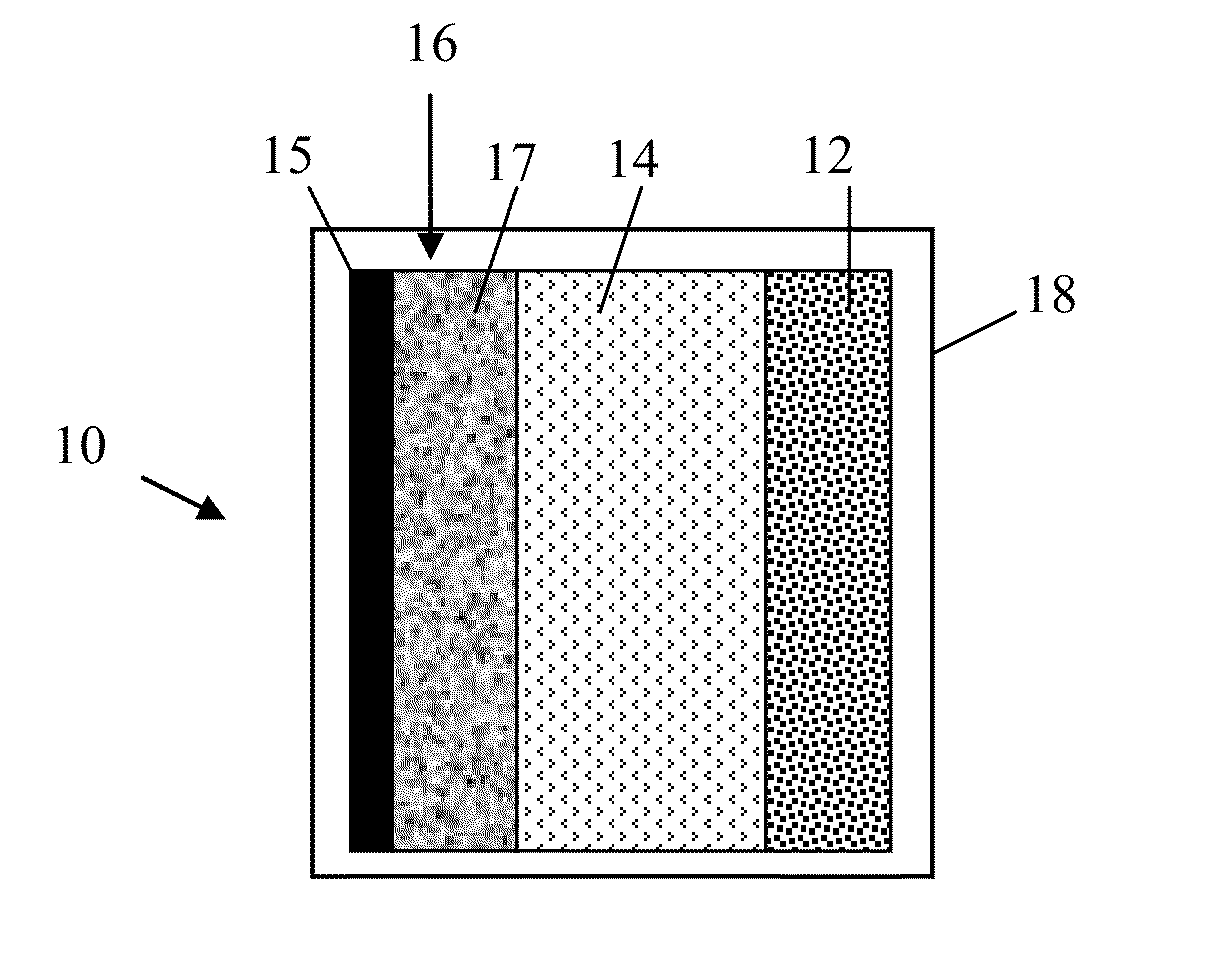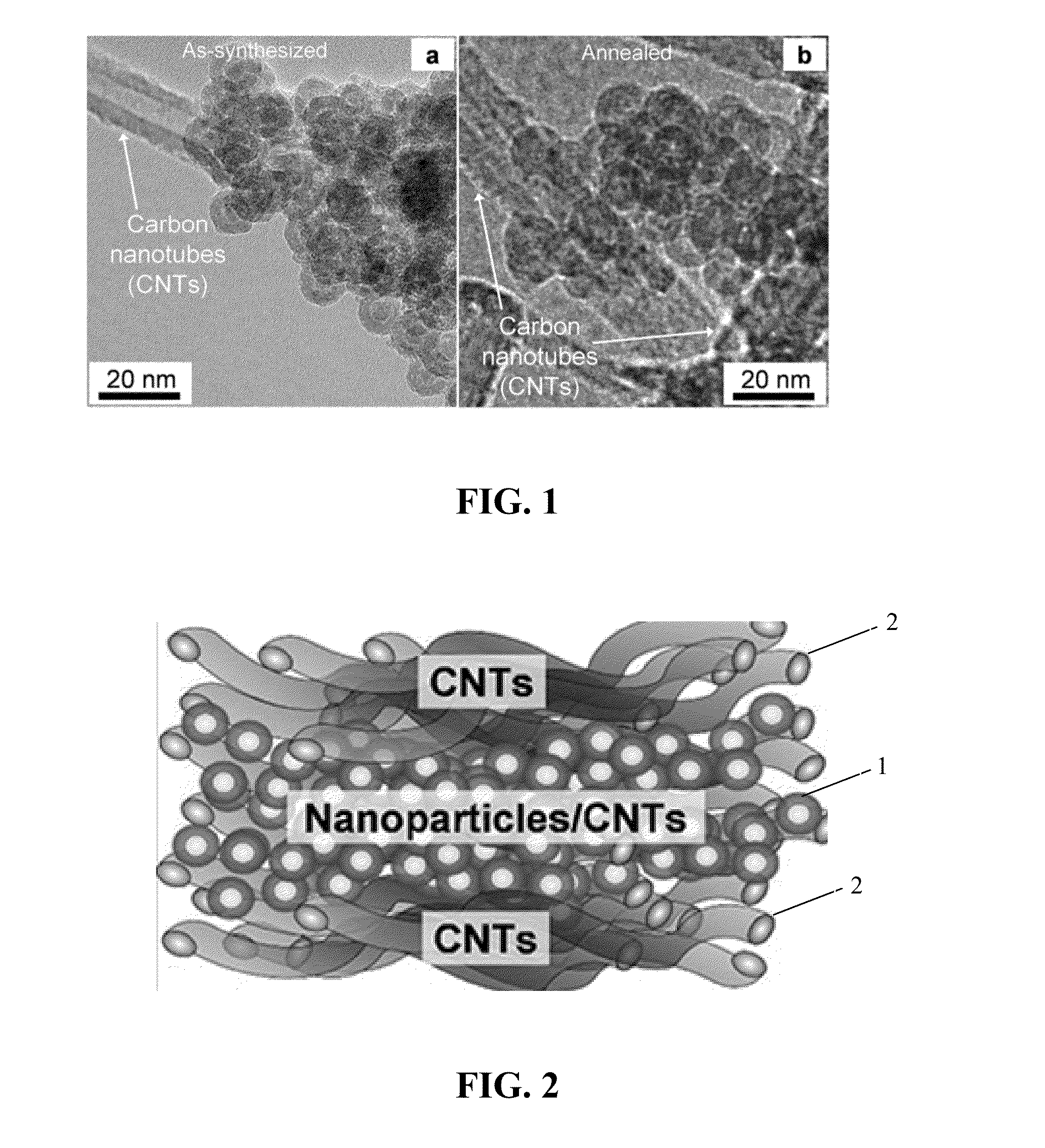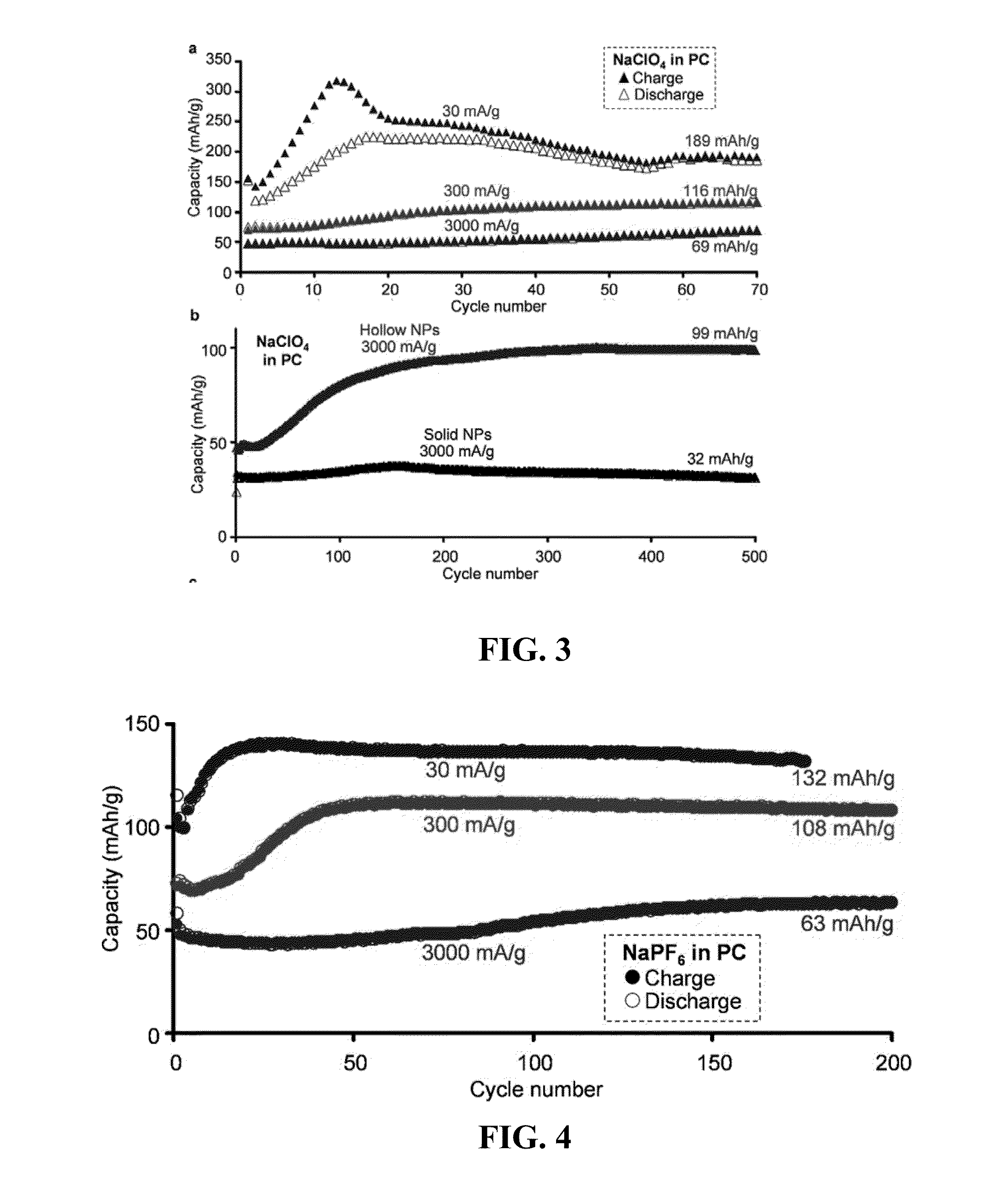Hollow nanoparticle cathode materials for sodium electrochemical cells and batteries
a technology of sodium electrochemical cells and batteries, which is applied in the direction of non-aqueous electrolyte cells, cell components, electrochemical generators, etc., can solve the problems of high cost, high cost, and high energy densities of these technologies, and achieves high power, easy layered effect, and high ra
- Summary
- Abstract
- Description
- Claims
- Application Information
AI Technical Summary
Benefits of technology
Problems solved by technology
Method used
Image
Examples
Embodiment Construction
[0036]This invention relates to energy storage devices, notably non-aqueous electrochemical cells and batteries and, more particularly, non-aqueous rechargeable sodium and sodium-ion electrochemical cells and batteries. Such cells can operate at ambient temperature. These rechargeable sodium and sodium-ion cells and batteries may be used for many energy storage applications, particularly electrical grid storage technologies. Other applications are possible for sodium and sodium-ion batteries including, but not limited to portable consumer products, tools, medical products, defense products, transportation, and aerospace products and other energy storage devices.
[0037]In one embodiment, this invention provides an electrode for sodium or sodium ion electrochemical cell and batteries. The electrode comprises a material of composition iron and oxygen (Fe and O) wherein the Fe / O ratio is less than one, and which has the gamma (γ) Fe2O3 crystal structure as defined by the X-ray diffractio...
PUM
 Login to View More
Login to View More Abstract
Description
Claims
Application Information
 Login to View More
Login to View More - R&D
- Intellectual Property
- Life Sciences
- Materials
- Tech Scout
- Unparalleled Data Quality
- Higher Quality Content
- 60% Fewer Hallucinations
Browse by: Latest US Patents, China's latest patents, Technical Efficacy Thesaurus, Application Domain, Technology Topic, Popular Technical Reports.
© 2025 PatSnap. All rights reserved.Legal|Privacy policy|Modern Slavery Act Transparency Statement|Sitemap|About US| Contact US: help@patsnap.com



